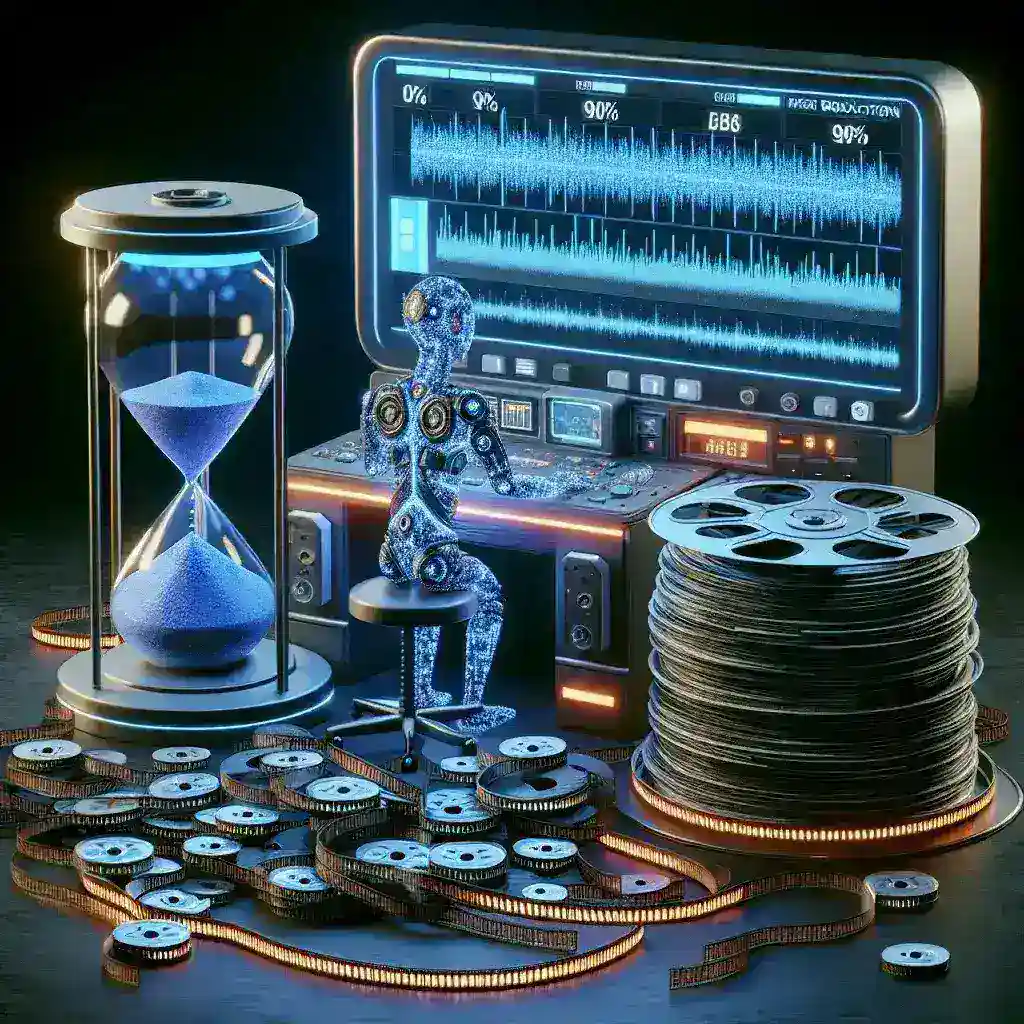Introduction
In today’s fast-paced digital landscape, video content has become an essential part of marketing strategies, educational resources, and entertainment. However, the post-production process has traditionally been time-consuming and labor-intensive. Enter AI video editing tools—innovative technologies designed to streamline editing workflows and significantly reduce post-production time. Recent advancements in artificial intelligence have led to the development of tools that can reduce editing time by up to 90% for professionals, allowing them to focus more on creativity and less on technicalities.
The Evolution of Video Editing
The journey of video editing has evolved dramatically over the decades. From manually splicing film reels to sophisticated software that offers a myriad of editing options, the transition has been nothing short of revolutionary. With the advent of AI, the editing landscape is poised for another transformation that promises to enhance productivity and efficiency.
Historical Context
In the early days of filmmaking, editing was an arduous process requiring meticulous manual labor. Editors had to physically cut and splice film strips, making the task not only time-consuming but also prone to errors. As technology progressed, digital editing software emerged, allowing for more precise edits and greater creative control. However, even with these advancements, the post-production process remained lengthy and resource-intensive. The introduction of AI into video editing marks a pivotal moment in this evolution.
How AI Video Editing Tools Work
AI video editing tools utilize machine learning algorithms and advanced analytics to make editing processes quicker and more efficient. These tools can analyze video footage, identify key scenes, and even suggest edits based on predefined criteria. Here’s a closer look at the functionality:
- Automated Scene Detection: AI can quickly scan through hours of raw footage to identify important scenes, allowing editors to focus on the most critical elements without wading through extensive content.
- Smart Editing Suggestions: Based on the context of the video, AI tools can recommend cuts, transitions, and effects that align with the desired narrative, saving time in the editing process.
- Facial Recognition: These tools can identify faces and track movements, making it easier to create montages or highlight specific individuals within a video.
- Audio Synchronization: AI can seamlessly sync audio with video footage, ensuring that dialogues and sound effects align perfectly without the need for manual adjustments.
Statistical Impact of AI Tools
According to recent studies, professionals using AI video editing tools report a staggering reduction in post-production time, with many claiming to save upwards of 90%. This not only allows for faster project turnover but also increases the potential for higher revenue as professionals can take on more projects in less time.
Pros and Cons of AI Video Editing
Advantages
- Increased Efficiency: By automating repetitive tasks, editors can concentrate on the creative aspects of filmmaking.
- Cost-Effective: Reducing the time spent on editing can lead to significant savings in labor costs.
- Enhanced Creativity: With less time spent on technicalities, editors can devote more energy to storytelling and creative decisions.
Disadvantages
- Dependence on Technology: Relying too heavily on AI tools might diminish an editor’s hands-on skills and intuition.
- Quality Control: While AI can make suggestions, it may not always align with the editor’s creative vision, requiring additional manual adjustments.
The Future of Video Editing with AI
As AI technology continues to advance, we can expect even more innovative features in video editing tools. Future predictions suggest the integration of interactive AI systems that learn from user preferences and editing styles to offer even more personalized assistance. This could lead to a new era of collaboration between human creativity and machine intelligence, where AI becomes an indispensable partner in the editing suite.
Real Examples of AI in Action
Many professionals in the film and media industry have started integrating AI tools into their workflows. For instance, a documentary filmmaker recently chronicled their experience using an AI video editing tool to streamline their post-production process. By implementing these tools, they managed to condense a month-long editing process into just a few days, enabling them to meet tight project deadlines without compromising on quality.
Expert Quotes
Industry experts highlight the transformative impact of AI on video editing. A prominent film editor stated, “AI is not here to replace us; it’s here to empower us. The efficiency it brings allows us to explore new creative avenues that were previously unattainable due to time constraints.”
Conclusion
AI video editing tools are reshaping the post-production landscape. By reducing editing time by up to 90%, these tools are enabling professionals to enhance their creative output while streamlining workflows. As technology continues to evolve, the partnership between human skill and artificial intelligence promises to redefine the future of video editing.
Call to Action
For professionals looking to elevate their video editing capabilities, exploring AI video editing tools is a must. Embrace the future of editing—where creativity meets efficiency.
